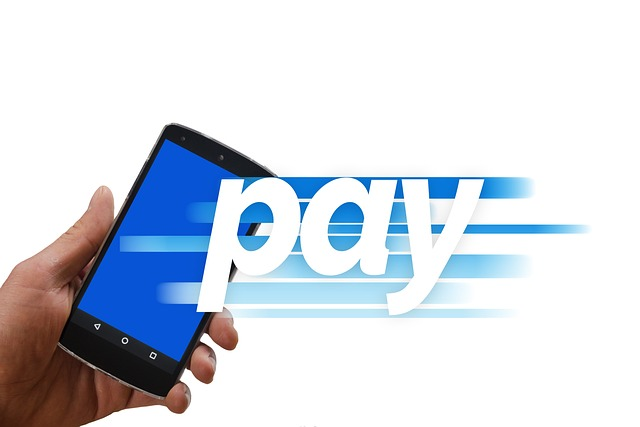
As the world's economy moves further and further into digital technology, digital banking is becoming an increasingly important part of our lives. Since its emergence in the 1980s, financial institutions have continued to find ways to make banking processes more efficient and secure.
As we approach 2023, we can see some truly exciting trends emerging in the realm of digital banking – from innovative payment solutions to enhance security measures that are helping redefine the traditional consumer banking experience for users around the globe.
In this blog post, we'll be looking at some of these groundbreaking new ideas and exploring what developments might be on the horizon for banks in 2023 and beyond!
What is Digital Banking?

Digital banking is on the rise and is considered one of the most influential innovations for modern-age financial systems. A challenge for many in finance is keeping up with changing times to remain competitive.
The primary goals of digital banking trends are to increase customer service, reduce overhead costs, and enhance digitization within financial infrastructures. This includes optimized services such as faster payments, bank-to-bank payment processing, automated alerts, notifications, and improved tracking features.
Many banks are increasingly utilizing Artificial Intelligence and other technological advancements to provide better service at a lower cost while optimizing results.
These trends bring high margins and new values to the banking industry, giving an edge over traditional banks that have yet to transition into digital technologies. Ultimately, the shift towards modernizing digital banking provides users with more convenience in engaging in financial activities than ever before.
Top 10 Digital Banking trends for 2023?
1. Automated Payments:
The introduction of automated payment solutions is becoming a key trend in digital banking, as more and more banks are looking to streamline their processes with the help of AI-based technology.
Automated payments allow customers to make payments without manually entering details or completing forms – saving time and reducing errors.
2. Voice Recognition:
Voice recognition technology is also rising in financial institutions, allowing customers to access their accounts by simply speaking into a microphone. This eliminates the need for passwords or PINs and provides additional security – protecting users from potential fraud or identity theft.
3. Biometrics:

Biometric solutions like fingerprint and facial recognition are also becoming more popular in digital banking. This allows banks to authenticate customers securely without relying on passwords, making transactions much more secure.
4. Blockchain:
Blockchain technology is being used by financial institutions to improve the speed and security of transactions and create new applications such as smart contracts and automated payments.
5. Real-time Payments:
Real-time payments are becoming more popular in digital banking, allowing customers to make payments without waiting for the funds to clear. This reduces delays and improves customer experience.
6. Open Banking:
Open banking is a trend that allows customers to securely share their financial data with third-party providers, such as fintech companies. This opens up new opportunities for customers to access services and products they wouldn't have been able to before.
7. Contactless Payments:
Contactless payments are becoming increasingly popular, allowing customers to make payments without entering a PIN or signing a receipt. This is an extremely convenient way for customers to make payments and reduce the risk of fraud.
8. Online Lending:
Online lending is a trend that has gained traction in recent years, allowing customers to access credit without having to go into a bank branch physically.
This makes it easier and faster for customers to access funds when needed.
9. Digital Wallets:
Digital wallets are becoming increasingly prevalent in digital banking, allowing customers to store funds, make payments, and access other financial services without using physical cards or cash.
10. Mobile Banking:

Finally, mobile banking is a key trend becoming more popular – allowing customers to access their accounts and make payments on the go.
This provides a high level of convenience for customers and is an important part of modern digital banking.
These are just some key trends we can expect to see in digital banking over the next year. As technology progresses, there's no doubt that banks will continue to find new ways to improve their services and provide a better overall experience for their customers.
Benefits of Digital Banking
1. Increased Security:
Digital banking solutions help to prevent fraud and other security issues by using advanced encryption technology and authentication methods, such as biometrics, to protect customer data.
2. Lower Costs:
Digital banking allows financial institutions to reduce costs associated with traditional banking services, such as paper statements and manual processes.
3. Easier Accessibility:
Digital banking makes it easier for customers to access their accounts, transfer funds, and manage their finances anytime – from anywhere in the world.
4. Increased Efficiency:
Digital banking solutions allow financial institutions to streamline processes and improve efficiency, enabling faster transactions and improved customer service.
5. Enhanced Customer Experience:
A digital banking experience is more convenient, user-friendly, and tailored to customers' needs, leading to improved customer experience.
6. Improved Decision Making:
Digital banking tools provide insights and data to help customers make better-informed decisions about their finances.
7. Increased Innovation:
By leveraging the latest technology, banks can create innovative products and services that meet the needs of their customers.
8. Greater Convenience:
Digital banking provides customers with a secure and convenient way to access their financial accounts, making it easier to manage their finances.
9. Improved Scalability:
Digital banking solutions are highly customizable, enabling banks to scale quickly and cost-effectively according to customer demands.
10. Automation:
Digital banking has enabled the automation of many processes, such as payments and contracts, which can save time and reduce errors.
These are just some advantages digital banking trends can bring to customers and financial institutions alike. As technology evolves,
we expect to see even more exciting innovations in digital banking shortly!
Traditional Banking vs. Digital Banking
Traditional Banking:
Traditional banking involves customers visiting a physical branch to complete transactions and access their accounts. This means that customers must wait in line or make an appointment to speak with a representative,
which can be time-consuming and inconvenient.
Digital Banking:
Digital banking allows customers to access the same services as traditional banking but without visiting a physical branch. This means that customers can complete transactions online or via mobile apps, making the process faster and more convenient.
Additionally, digital banking solutions often include advanced features such as budgeting tools and financial insights to help customers manage their finances more effectively.
Conclusion:
As we approach 2023, digital banking is becoming increasingly important. With the latest digital banking trends, financial institutions can provide customers with a secure, convenient, and personalized experience.
In addition to improved security, lower costs, and increased efficiency – digital banking offers enhanced customer experience, greater innovation, more convenience, improved scalability, and automation and automation.
The traditional banking experience is no longer necessary when digital banking offers many benefits and advantages.
FAQs:
What is digital banking?
Digital banking refers to using digital technology, such as online and mobile banking apps, for basic banking activities, such as transferring funds, paying bills and managing accounts.
How has digital banking transformed the financial services industry?
Digital banking has revolutionized the financial services industry by providing customers with secure, convenient, and personalized online services.
Additionally, digital banking solutions often include advanced features like budgeting tools and financial insights to help customers manage their finances more effectively.
What are the advantages of digital banking?
The main advantages of digital banking include improved security, lower costs, increased efficiency, enhanced customer experience, greater innovation, more convenience, improved scalability and automation.
It also offers customers access to their bank accounts from any location with an internet connection.
What kind of data is used in digital banking?
Digital banking solutions use consumer data such as account information, transaction histories, and credit scores to provide personalized services and insights.
Additionally, many financial institutions are investing in artificial intelligence and machine learning technologies to improve customer experience.
Are there any digital-only banks?
Yes, many digital-only banks are now operating in various countries worldwide, offering customers access to banking services without having to visit a physical branch.
These institutions offer competitive rates and services that are often superior to traditional banks.
Does digital banking offer better security than traditional banking?
Yes, digital banking offers improved security due to advanced encryption technologies and two-factor authentication protocols.
Additionally, many digital banking solutions also provide customers with access control tools and fraud detection capabilities to help protect their accounts.
How can digital banking help customers manage their finances?
A. Digital banking solutions often include budgeting tools, financial insights and other features to help customers better manage their finances. These tools allow users to track their spending habits, set savings goals, develop personalized financial plans and more. Many banks also offer digital advisors who can provide personalized advice to customers.
What is digital banking transformation?
Digital banking transformation refers to adapting existing processes and technologies to modernize the customer experience and make it more secure, efficient, and convenient. For example, banks may implement AI-driven chatbots, automated payment solutions and other digital banking solutions to improve the customer experience.
What is the future of digital banking?
The future of digital banking looks bright as many financial institutions invest in innovative technologies and services, such as artificial intelligence and machine learning, to make banking even more secure, efficient and personalized for customers.
Additionally, with more banks offering digital-only solutions, more customers are likely to switch over to digital banking in the coming years.
Schedule a call with ProductFy's team to learn more about credit builder cards, white label debit cards and FinTech platforms, and how you can launch your own white label banking products.
Talk to us to find out more about embedded finance or our other white-label solutions.
Watch this space for more updates as we roll out more features to accelerate financial product innovation. As always, connect with us below to learn more about how innovative card programs and scalable features can power your financial product or fintech program.
